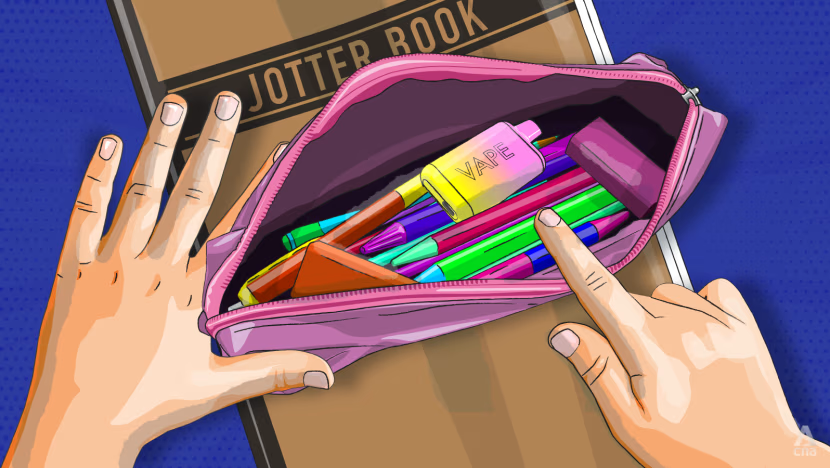At first, it might look like a small device hidden in a student’s hand or sleeve. But behind the flavored air and smoke, vaping is increasing problems at school, for example, stress, addiction, and social pressure that many students face every day.
People think vaping is a safer option than smoking. From some people’s perspective, vaping seems better because it is colorful and smells good compared to cigarettes.
Young people have become addicted as it has hooked this generation. It could be because it has catching flavors. At school, students have said that vaping is very notorious and popular.
“I think it’s very common,” said 10th grader Lucia Montorsi. “It’s something trending in school, and people are doing it to fit in.”
She explained that peer pressure plays a major role in why students try vaping in the first place, especially in social situations.
Another 10th grader, Emilia Valencia, added, “I’ve been in many situations where people offered me vapes, but I’ve always said no. Still, it’s hard because everyone around you is doing it. You feel left out.”
Even though students are aware that vaping is harmful, many underestimate just how serious the health risks can be. Research shows that nicotine in vapes can increase anxiety, irritability, and stress issues that students often already struggle with.
According to the CDC, about 10% of high school students reported using e-cigarettes in 2023, a number that has been declining since 2019. However, some students believe the numbers at our school may be much higher.
“Some of my friends said they would only vape on weekends. Now they can’t go a day without it. They feel bad if they don’t do it,” Emilia said.
Nicotine addiction can happen quickly, especially in teenagers whose brains are still developing.
Lucia shared, “When you’re young, you don’t always make the right decisions. I don’t think students understand the risks they’re taking when they start vaping.”
She also believes that current school efforts to educate students are not enough: “Just giving a presentation to everyone won’t work. People need to see what vaping does to their lungs and body in the long term.”
Although some schools are installing vape detectors in bathrooms, students question whether these actions are truly effective.
“They said they were going to put vape detectors in our bathrooms, but they didn’t work,” Emilia said. “People still did it. These solutions might stop it at school, but not outside of school.”
Matilda Moreno, another student, was even more direct: “I don’t think there’s an effective solution. If people want to do it, they’ll find a way.” She estimated that around 60% of students at our school have tried vaping, far more than national statistics suggest.
Many students agree that vaping is often a response to social stress and anxiety. Lucia reflected, “Nicotine can feel like a stress reliever because it calms cravings, but it just creates more dependence.” The temporary relief it brings comes with consequences in the future.
So what can be done? Students had different opinions, but one common suggestion was for a stronger, more personal education.
“Schools should show videos of the real consequences,” said Montorsi. “If people knew what could happen, I think they’d be scared enough to stop.”
Lucia and Emilia emphasized self-respect and limits when asked how they would support a friend feeling peer-pressured to vape.
“You don’t have to vape to fit in,” Lucia said. “Vaping doesn’t define you.” Emilia added, “Tell your friends to help you. The right friends will support your choice.”
Vaping may not be as loud or visible as it once was, but it hasn’t gone away. For many high school students, it’s a quiet habit, one that affects their health, learning, and relationships.
But students are also part of the solution. By speaking out, sharing stories, stopping peer pressure, and supporting each other, they can help change the trend.



